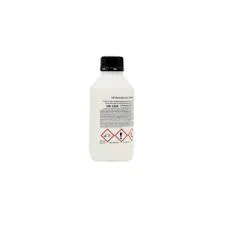What is Benzalkonium Chloride?
Benzalkonium chloride (BAC) is a compound commonly used as a disinfectant and preservative in various products. It is an organic salt that exhibits strong antimicrobial properties, making it effective against a wide range of bacteria, viruses, and fungi.
What is benzalkonium chloride used for?
Benzalkonium chloride is widely used in healthcare settings, including hospitals and clinics, as a surface disinfectant for instruments, medical equipment, and hard surfaces. It is also found in many consumer products such as hand sanitizers, disinfectant wipes, ophthalmic solutions, nasal sprays, and personal care products like soaps, shampoos, and cosmetics.
What are the possible side effects of benzalkonium chloride?
While benzalkonium chloride is generally considered safe and effective when used as directed, it can cause skin and eye irritation in some individuals, especially at higher concentrations.
Notice:
This information was assembled from a wide variety of sources and no warranty, expressed or implied, relating to the accuracy of the information is made. The user assumes all liability for any damage or injury resulting from the use or misuse of this information.
Benzalkonium Chloride(Dodecyl Dimethyl Benzyl ammonium Chloride)
Benzalkonium Chloride
What is it?
Benzalkonium chloride is quaternary ammonium compound used in the pharmaceutical industry as an antimicrobial preservative, antiseptic, disinfectant, solubilizing agent, and wetting agent. It is a widely used preservative often found in ophthalmic solutions and contact lens solutions.
It may be used in combination with other preservatives or excipients to enhance its antimicrobial activity against strains of other bacteria. In nasal and ear formulations it may be combined with the preservative thimerosol. It is also used as a preservative in cosmetics.
Benzalkonium chloride is a common bactericidal preservative in albuterol and metaproterenol nebulizer solutions in the U.S. Benzalkonium chloride has been implicated in causing paradoxical broncospasms in children after the use of inhaled antiasthmatic medications. The bronchospasm may be accompanied by a cough, burning sensation, facial flushing and pruritus.






